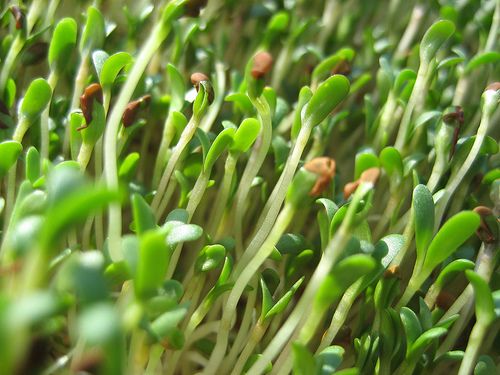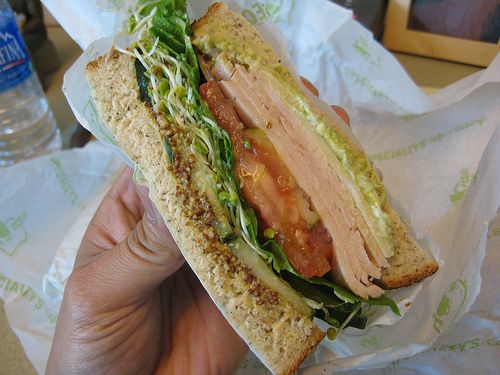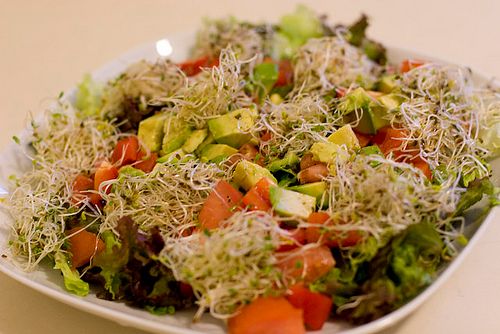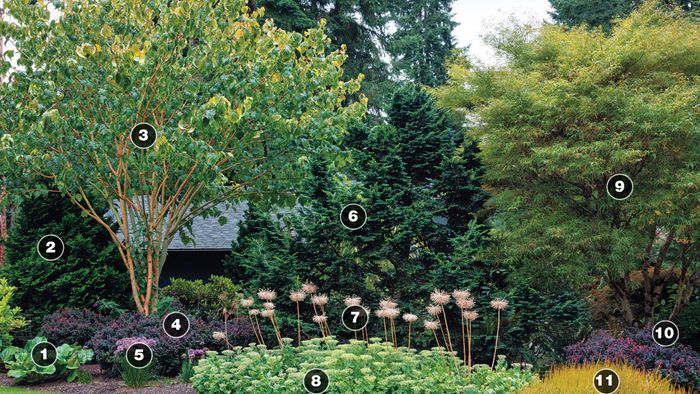
It’s hard to ignore the signs of fall and who would want to anyway? With it’s gorgeous colors and soft temperatures, I’m a fan. But it does tend to remind me that winter can’t be far away and let’s face it; our produce growing slows down considerably even if not entirely.
Whether you’re new to gardening, a budding homesteader, or a die-hard farmer there’s no need to wait for nice weather to grow food crops – grow sprouts! I’m talking about those little greenies that specialty sandwich shops put on sandwiches and in stir-frys? These little gems can be grown indoors all year long so you’re harvesting miniature produce almost consistently – rain or snow.
In case you’re wondering, sprouts aren’t their own sproutish-species but simply newly germinated seedlings of other well-known plants such as chickpeas, soybeans, fenugreek, lentils, mung bean, wheat, radish, broccoli, and alfalfa. Sprouts are a delicious way to add some crunch to your food along with vitamins, minerals, and protein. Sprouts are a perfect source of Vitamin C. In fact, sailors throughout history were known to have been served sprouts with every meal to prevent scurvy.
Want to give it a go? There are several ways to go about it. The first and the simplest (admittedly, the most expensive) way is to buy one of those commercial units that are made for starting sprouts. If you’re reading this around your birthday, you could always drop a hint or two. Until then, here are a couple of do-it-yourself methods.
Mason Jar Method
You’ll Need:
- Mason Jar
- Cheesecloth or muslin fabric
- Big rubber band or screw lid for mason jars
- Seeds
- Water
Take your seeds and put them in the mason jar, adding enough water to cover the seeds. Use the muslin or cheesecloth to cover the mouth of the jar. Use the rubber band or the screw part of the mason jar lid, secure the muslin or cheesecloth. Let the seeds soak overnight.
In the morning, turn the jar over so the water drains out (the cloth will keep the seeds in). Now remove the cloth and add some water to swish it around in the jar. Put the cloth back in place and drain the seeds. At this point, you don’t want the sprouts soaking in water anymore. Instead, just keep the seeds moist by rinsing and swishing a couple of times a day. You’ll do the rinsing for about 5 days (unless you eat the sprouts by then). Some seeds rinse easily and some need more aggressive rinsing like lentils.
For the first maybe 3 days, you want to keep the jar in a shaded area to give the sprouts a chance to pop up, but around day 4, you’ll want to have them produce a little chlorophyll for you by putting them in a sunny window.
Flat Tray Method
You’ll Need:
- Flat plastic or cardboard tray (with holes in the bottom for drainage)
- Newspaper
- Soil
- Plastic wrap
- Seeds
- Water
While the ball jar method is simpler, the reason I like the flat tray method is because for one I like what I’m growing as a decoration in my home and two, I’m weird about plants growing without soil what-so-ever. It somehow feels like I’m robbing them of their sprout-right to have their little green toes planted in soil, but I digress.
You get a flat tray like the ones from buying bedding plants. Actually anything you can find is good – if it’s something you recycled, you get extra karma points for that. Rinse and soak your beans/seeds overnight in a bowl or jar.
Now you just add dampened soil to the tray about 1 inch thick. Next add your soaked seeds by sprinkling them all over the soil in the tray. Dampen your newspaper (about 3-4 layers) and then lay it on top of the seeds. use the plastic wrap to make a cover for the entire unit. The idea is to keep the seeds moist. Keep the try out of the sun for now.
After about 3 days or so, take off the plastic and newspaper and set your sprout tray in sunny window so they turn green. You can harvest your sprouts for salads, sandwiches, stir-fry, or whatever your little hear desires in about 8-10 days.
Sprouts grown and harvested from you kitchen are not only fresher and tastier than from your local grocer, but are quite cost effective. Not to mention the wonderful mood it puts you in when you grow fresh produce for you and your family.
Fine Gardening Recommended Products

Gardena 3103 Combisystem 12-Inch To 20-Inch Adjustable Metal Fan Rake Head
Fine Gardening receives a commission for items purchased through links on this site, including Amazon Associates and other affiliate advertising programs.

ARS Telescoping Long Reach Pruner
Fine Gardening receives a commission for items purchased through links on this site, including Amazon Associates and other affiliate advertising programs.





















Comments
Log in or create an account to post a comment.
Sign up Log in